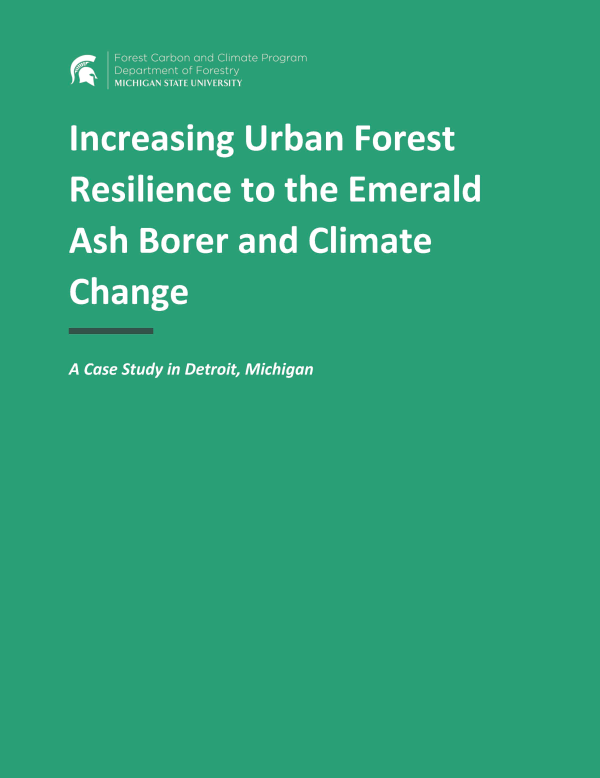
Increasing Urban Forest Resilience to the Emerald Ash Borer and Climate Change
DOWNLOADJune 27, 2025
Executive Summary
The invasive Emerald Ash Borer (EAB) decimated the urban tree canopy in Detroit, Michigan starting in the mid-1990s (Cappert et al. 2005). As a result of planting efforts in the aftermath of Dutch Elm Disease, much of the city’s canopy was dominated by ash trees, creating ideal conditions for an ash-specific invasive pest outbreak.
Increasing the resilience of urban forests and their ability to resist threats is essential, as climate-driven impacts are projected to become more severe (Rutledge et al. 2024). The U.S. Forest Service (USDA FS), American Forests (AF), and the Greening of Detroit are spearheading research and initiatives in the City of Detroit to combat the effects of the EAB by producing and planting EAB-resistant ash trees (Pike et al 2020). In addition, the Tree Equity Score tool, developed by American Forests, is being used to prioritize planting efforts in neighborhoods and communities of greatest need to maximize benefits and expand equitable access to urban trees.
Combatting the negative impacts of the EAB in Detroit will increase the ability of the urban canopy to resist future climate change stressors and invasive pests and pathogens. Increasing canopy diversity and concentrating planting efforts on underserved areas are two key strategies to ensure long-term benefits of urban forests to local communities.



 Print
Print Email
Email